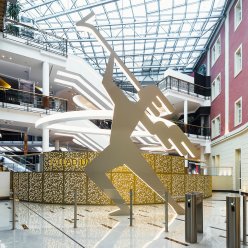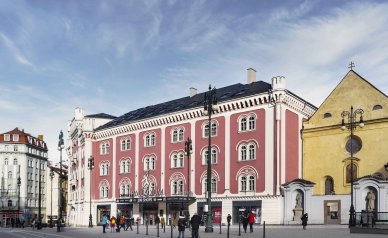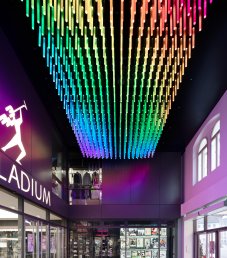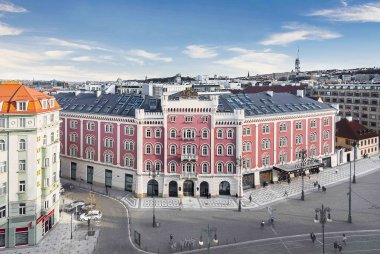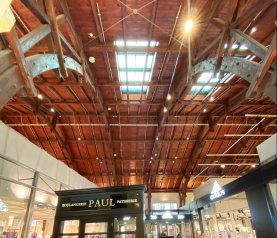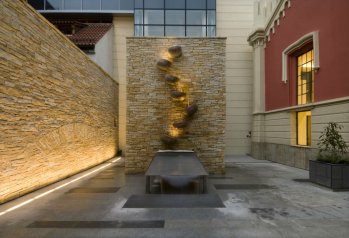The architectural concept for the exterior aimed at sensitively blending an historic building (a 19th century barracks) with new elements. The project revitalized a previously neglected 13,500 sqm site in the heart of old Prague. Thanks to PALLADIUM, the center of Prague has new look.
The creative design features extend to the shop fronts, flooring, handrails, escalators, columns and ceilings. The mall is naturally lit. Part of the interiors form three major archeological foundings. Its use also find stone troughs from the former riding hall as a part of fountain sculpture in the office building court yard.

